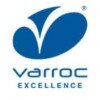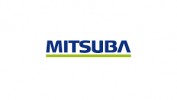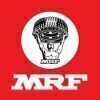Filter interviews by
Pricol Engineering Industries Quality Engineer Interview Questions and Answers for Experienced
Pricol Engineering Industries Quality Engineer Interview Experiences for Experienced
1 interview found
I applied via Naukri.com and was interviewed in May 2022. There were 2 interview rounds.

(2 Questions)
- Q1. Explain 8D? how to control the issue process
- Ans.
8D is a problem-solving methodology used to identify, correct and prevent recurring problems.
D1: Establish the team and define the problem
D2: Describe the problem in detail
D3: Develop an interim containment action
D4: Identify root cause and verify it
D5: Choose and verify permanent corrective actions
D6: Implement and validate corrective actions
D7: Prevent recurrence and recognize the team
D8: Celebrate the success and sh
- Q2. Process improvement on process line explain details
- Ans.
Process improvement on process line involves identifying and implementing changes to enhance efficiency and quality.
Analyze current process flow and identify bottlenecks or areas for improvement
Implement Lean or Six Sigma methodologies to reduce waste and variability
Use statistical process control techniques to monitor and control process performance
Collaborate with cross-functional teams to gather input and implement ...
Interview Preparation Tips
- 8D Analysis
- Standards
Top trending discussions






Interview questions from similar companies

I applied via Campus Placement and was interviewed before Oct 2020. There was 1 interview round.
Interview Questionnaire
1 Question
- Q1. 2year experience complete
Interview Preparation Tips

Interview Questionnaire
7 Questions
- Q1. What is SPC ? explain briefly.
- Q2. What is corrective action and preventive action?
- Ans.
Corrective action is taken to address and resolve existing problems, while preventive action is taken to prevent potential problems from occurring.
Corrective action focuses on addressing and resolving existing problems or nonconformities.
Preventive action focuses on identifying and eliminating potential problems before they occur.
Corrective action is reactive, while preventive action is proactive.
Corrective action aims...
- Q3. Whow would you describe yourself?
- Ans.
I am a detail-oriented Quality Engineer with a passion for continuous improvement and problem-solving.
Detail-oriented with a focus on quality standards
Passionate about continuous improvement
Skilled in problem-solving and root cause analysis
- Q4. Explain steps for demin wheels.
- Ans.
The steps for demin wheels involve cleaning, inspecting, repairing, and testing.
Clean the wheels thoroughly to remove any dirt or debris.
Inspect the wheels for any damage or defects.
Repair any issues found, such as replacing worn-out parts or fixing cracks.
Test the wheels to ensure they meet quality standards and perform as expected.
- Q5. What is hardness?Explain briefly
- Ans.
Hardness is the measure of a material's resistance to indentation or scratching.
Hardness is a property of materials that determines their ability to withstand deformation
It is often measured using tests like the Rockwell, Brinell, or Vickers hardness tests
Hardness can be influenced by factors such as the material's composition, heat treatment, and microstructure
Higher hardness generally indicates greater strength and d...
- Q6. How to upgrade suppliers?
- Ans.
To upgrade suppliers, establish clear quality standards, conduct regular audits, provide feedback and support for improvement, and consider alternative suppliers.
Establish clear quality standards and communicate them to suppliers
Conduct regular audits to assess supplier performance and identify areas for improvement
Provide feedback and support to suppliers to help them meet quality standards
Consider alternative supplie...
- Q7. Supplier selection criteria.
- Ans.
Supplier selection criteria are the factors and considerations used to evaluate and choose suppliers for a company's procurement needs.
Quality and reliability of products or services
Supplier's financial stability and ability to meet demand
Supplier's track record and reputation
Cost and pricing
Supplier's location and proximity to the company
Supplier's compliance with industry standards and regulations
Supplier's capacity ...
Interview Preparation Tips
Experience: resume should be to the point and should include what work had you done in past

I applied via Walk-in and was interviewed before May 2020. There was 1 interview round.
Interview Questionnaire
1 Question
- Q1. About production
Interview Preparation Tips

I applied via Job Portal and was interviewed before Feb 2021. There were 2 interview rounds.

(1 Question)
- Q1. Explain about the quality tools and techniques
- Ans.
Quality tools and techniques are used to ensure and improve the quality of products and processes.
Quality control charts: Used to monitor and control process variations.
Cause-and-effect diagrams: Help identify and analyze potential causes of problems.
Pareto charts: Used to prioritize and focus on the most significant issues.
Root cause analysis: A systematic approach to identify the underlying causes of problems.
Statist...
Interview Preparation Tips

Interview Questionnaire
4 Questions
- Q1. Personal and functional
- Q2. About your job description and processes and your achievements
- Q3. Your plus and minus
- Q4. Senior Management Intraction on the basis of personal, behavioral, backgrounds,job function and achievements.

Quality Engineer Interview Questions & Answers
Samvardhana Motherson Groupposted on 26 May 2020
I applied via Walk-in and was interviewed in Apr 2020. There were 3 interview rounds.
Interview Questionnaire
3 Questions
- Q1. 7 QC tools?
- Ans.
The 7 QC tools are a set of basic quality control tools used to identify and solve quality problems.
Check sheets
Control charts
Histograms
Pareto charts
Scatter diagrams
Stratification
Cause-and-effect diagrams
- Q2. Roles & Responsibilities on previous company?
- Ans.
As a Quality Engineer in my previous company, I was responsible for ensuring product quality, conducting audits, and implementing quality control processes.
Conducted product quality inspections and audits
Implemented quality control processes to improve product quality
Analyzed data to identify areas for improvement
Collaborated with cross-functional teams to address quality issues
Ensured compliance with industry standard
- Q3. QA & QC Difference?
- Ans.
QA focuses on preventing defects while QC focuses on identifying and fixing defects.
QA is a proactive process that involves planning, designing, and executing tests to prevent defects from occurring.
QC is a reactive process that involves identifying defects through testing and then fixing them.
QA is focused on the entire software development life cycle while QC is focused on the testing phase.
Examples of QA activities ...
Interview Preparation Tips

I applied via Naukri.com and was interviewed in Dec 2020. There were 3 interview rounds.
Interview Questionnaire
1 Question
- Q1. Core Java, J2EE
Interview Preparation Tips

I applied via Recruitment Consultant and was interviewed in Dec 2020. There were 3 interview rounds.
Interview Questionnaire
7 Questions
- Q1. Q1. What is the latest version of PPAP?
- Ans.
The latest version of PPAP is PPAP 4th Edition.
PPAP stands for Production Part Approval Process.
The 4th Edition of PPAP was released in 2006.
It is a standardized process in the automotive industry to ensure that suppliers meet the requirements for production parts.
PPAP includes documentation such as design records, engineering change documents, and control plans.
It also involves conducting various tests and measurement...
- Q2. Q2. What is Fmea & why it is used during development?
- Ans.
FMEA is a method used during development to identify and mitigate potential failures in a system or process.
FMEA stands for Failure Mode and Effects Analysis.
It is a systematic approach to identify and prioritize potential failures in a system or process.
FMEA helps in understanding the potential causes and effects of failures.
It is used to assess the severity, occurrence, and detectability of failures.
By analyzing fail...
- Q3. What is DVP&R ?
- Ans.
DVP&R stands for Design Verification Plan and Report. It is a process used to ensure that a product meets its design specifications.
DVP&R is a structured approach to testing and validating a product's design.
It involves creating a plan for testing the product, executing the tests, and documenting the results.
The plan includes details such as the test objectives, test methods, acceptance criteria, and test schedule.
The ...
- Q4. What is the value of NDC & we take the this value..??
- Ans.
NDC stands for National Drug Code. It is a unique identifier for drugs in the United States.
NDC is a 10-digit code that identifies drugs, including prescription and over-the-counter medications.
The first segment of the NDC represents the labeler code, which identifies the manufacturer or distributor of the drug.
The second segment represents the product code, which identifies the specific drug formulation and strength.
T...
- Q5. At which stage the Npd work of PPAP File making is done?
- Ans.
PPAP file making is done during the production validation stage of NPD work.
PPAP file making is a part of the production validation process in NPD work
It involves documenting the production process and ensuring it meets customer requirements
PPAP file making is typically done after the design and development stages
It includes documentation such as control plans, process flow diagrams, and inspection records
- Q6. How many ppm in 6 sigma..?
- Ans.
The ppm in 6 sigma is 3.4 defects per million opportunities (DPMO).
6 sigma aims for a defect rate of 3.4 DPMO.
PPM stands for parts per million.
DPMO is a measure of process performance.
The lower the DPMO, the better the process performance.
Achieving 6 sigma means having a process that produces 99.99966% defect-free output.
- Q7. Problem solving tools & describe pareto chart & why we use it..?
- Ans.
Pareto chart is a problem-solving tool used to identify and prioritize the causes of a problem.
Pareto chart is a bar graph that displays the relative frequency or size of problems in descending order of importance.
It helps to identify the vital few causes that account for the majority of the problems.
It is based on the Pareto principle, also known as the 80/20 rule, which states that 80% of the effects come from 20% of...
Interview Preparation Tips

I applied via Referral and was interviewed before Nov 2021. There were 2 interview rounds.

(3 Questions)
- Q1. Process related questions ,.
- Q2. How to manage spares.
- Ans.
Spares management involves inventory control, procurement, and maintenance planning.
Create a detailed inventory of all spares and their usage frequency.
Establish a procurement process that ensures timely availability of spares.
Implement a maintenance plan that includes regular inspection and replacement of spares.
Use technology such as barcoding and RFID to track spares and prevent loss or theft.
Regularly review and up...
- Q3. How to manage shift issue
- Ans.
Shift issues can be managed by effective communication, proper scheduling, and providing necessary resources.
Establish clear communication channels between team members and management
Create a schedule that takes into account employee preferences and availability
Ensure that all necessary resources are available for each shift
Regularly review and adjust the schedule as needed
Provide training and support for employees to ...
Interview Preparation Tips
Pricol Engineering Industries Interview FAQs
Tell us how to improve this page.
Pricol Engineering Industries Interviews By Designations
- Pricol Engineering Industries Mechanical Engineer Interview Questions
- Pricol Engineering Industries Engineer Interview Questions
- Pricol Engineering Industries Mechanical Maintenance Engineer Interview Questions
- Pricol Engineering Industries Manufacturing Engineer Interview Questions
- Pricol Engineering Industries Quality Engineer Interview Questions
- Pricol Engineering Industries Team Manager Interview Questions
- Pricol Engineering Industries SMT Engineer Interview Questions
- Pricol Engineering Industries Design Engineer Interview Questions
- Show more
Interview Questions for Popular Designations
- Quality Inspector Interview Questions
- Senior Quality Engineer Interview Questions
- Quality Controller Interview Questions
- Quality Assurance Interview Questions
- Quality Manager Interview Questions
- Quality Executive Interview Questions
- Quality Assurance Officer Interview Questions
- Quality Assurance Quality Control Engineer Interview Questions
- Show more
Quality Engineer Interview Questions from Similar Companies
Pricol Engineering Industries Quality Engineer Reviews and Ratings
based on 8 reviews
Rating in categories
|
Engineer
32
salaries
| ₹2.2 L/yr - ₹5.3 L/yr |
|
Quality Engineer
29
salaries
| ₹1.6 L/yr - ₹4.5 L/yr |
|
Assistant Manager
26
salaries
| ₹5 L/yr - ₹9.8 L/yr |
|
Design Engineer
19
salaries
| ₹2.4 L/yr - ₹6 L/yr |
|
Production Engineer
14
salaries
| ₹1.8 L/yr - ₹3 L/yr |

Bosch

JBM Group

Samvardhana Motherson Group

Subros
- Home >
- Interviews >
- Pricol Engineering Industries Interview Questions >
- Pricol Engineering Industries Quality Engineer Interview Questions for Experienced










